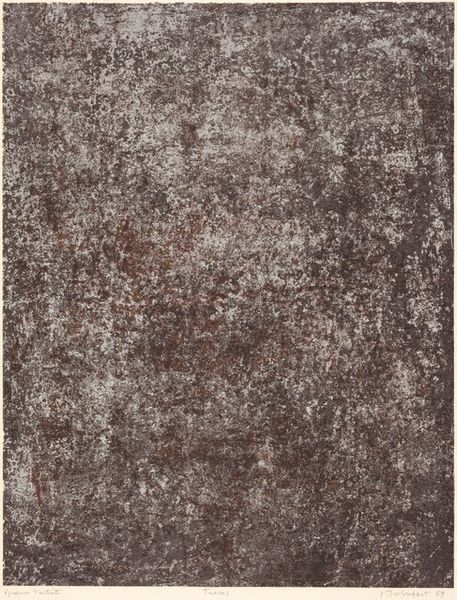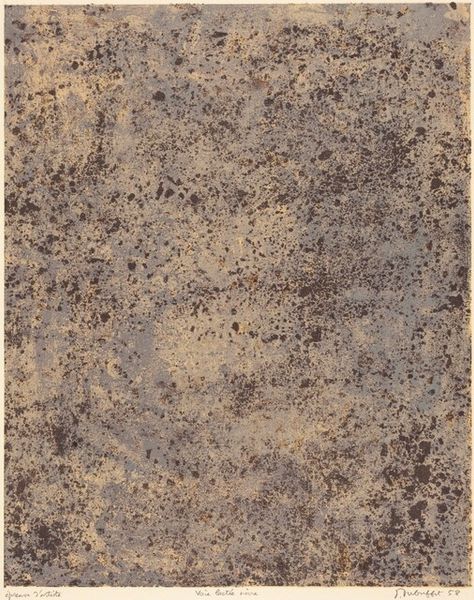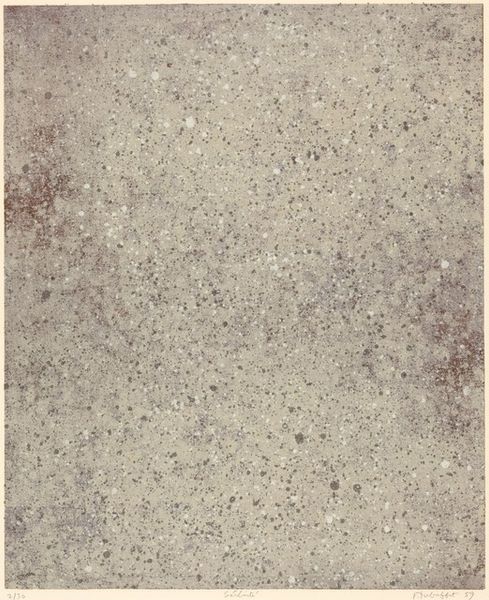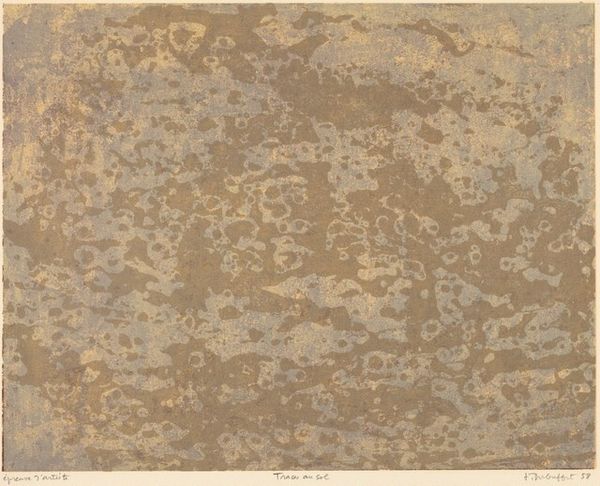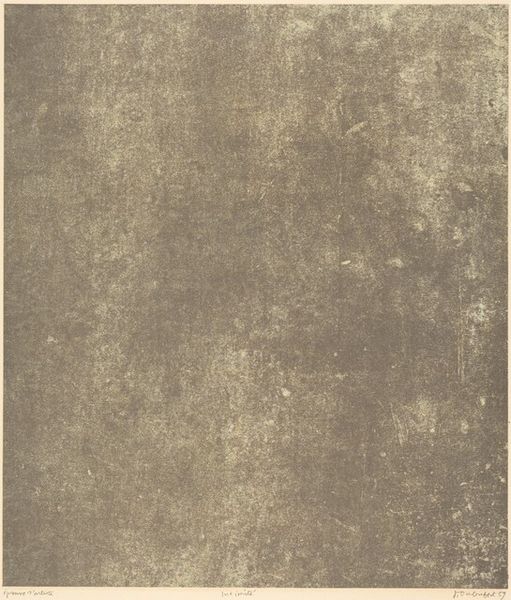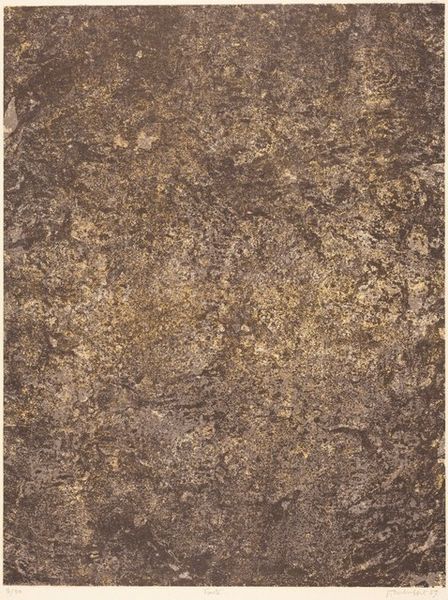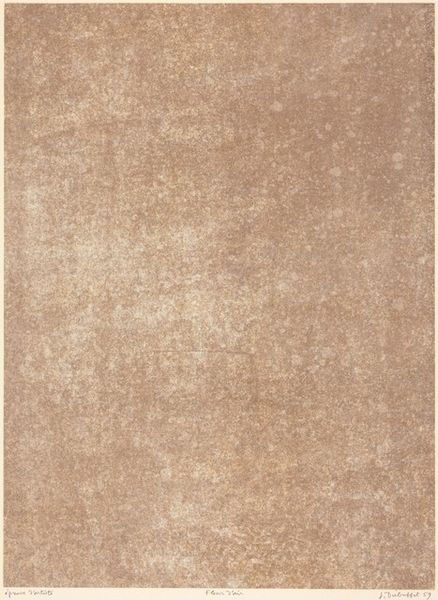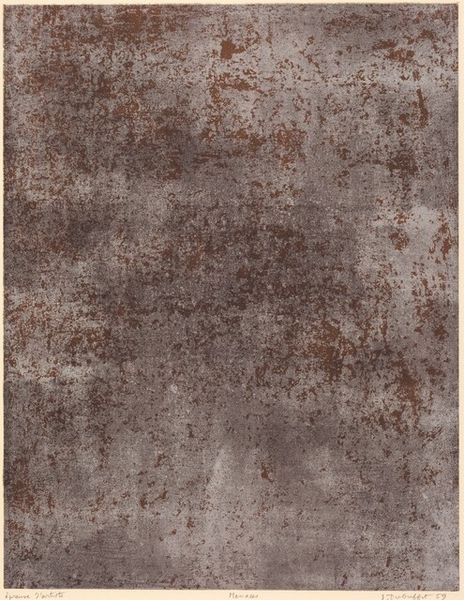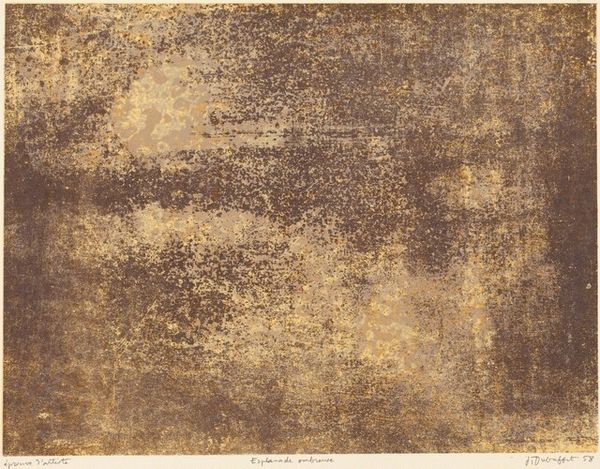
# print
#
art-informel
#
matter-painting
#
abstraction
Copyright: National Gallery of Art: CC0 1.0
Jean Dubuffet made this print, 'Champ muet,' in 1958. There's this overall sense of texture, a field of marks that, for me, speaks to the raw, unfiltered energy that Dubuffet was all about. Up close, you can see how the surface is built from tiny specks and daubs of color – browns, yellows, and grays. It’s like he’s trying to get down to the nitty-gritty of the material world, embracing the dirt and grit. The way he layers these colors creates a kind of shimmering effect, as if the surface is alive and breathing. There is a cluster of marks towards the lower right of the piece which seem to interrupt the overall field of marks. Dubuffet’s work often reminds me of Paul Klee, in that both artists were interested in the art of children, embracing the primitive as a way to bypass the conventions of high art. It's a reminder that art is always in conversation with itself, each artist building on what came before, pushing things in new directions. It’s not about having all the answers, but about staying curious and open to possibility.
Comments
No comments
Be the first to comment and join the conversation on the ultimate creative platform.

